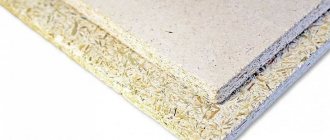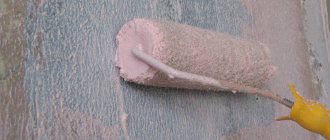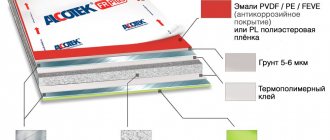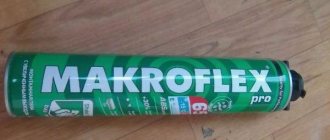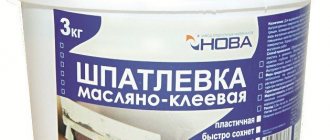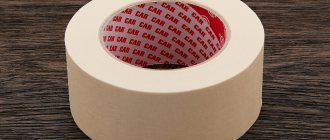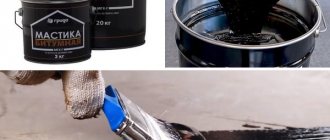Drying oils are film-forming agents created on the basis of vegetable oils that have undergone additional processing at high temperatures or oxidation. They add solvents and driers used to create oil paints, oil-resin varnishes, primers and putties.
Historically, drying oils were used to impregnate and coat wood; it was the main means of protecting products made from this material from rot, moisture and parasites. In the 20th century, when other means of protecting wooden materials were invented, drying oil began to be used for interior decoration and as a pre-coat for painting. Drying oil improves paint adhesion and reduces its consumption. Drying oil is also the basis for the production of putties and oil paints.
In accordance with the components from which drying oil is made, it is classified as follows:
- natural drying oil;
- semi-natural drying oil;
- combined drying oil;
- synthetic drying oil.
What is drying oil?
Drying oil is a wood treatment product. It comes in containers of different sizes, which allows you to cover the required area. Drying oil is quite thick and should not be left in the open sun, as it begins to dry out under the rays. It is this property that is used when finishing wooden surfaces, since when applied to dry wood, drying oil penetrates the structure, after which it begins to dry out and forms a protective film.
Drying oil is of natural origin, which makes it favorable for direct contact with humans. The formed film is highly resistant to moisture, so the wood does not darken or deteriorate for a long time, but after the interval specified in the instructions, re-application of impregnation is recommended. Drying oil has deep penetration into the structure, which requires the use of special oils and primers to reduce consumption.
Story
Boiled butter (butter that has undergone heat treatment) has been known for a long time. Even in Ancient Egypt, boiled oil was used to prepare medicines, aromatic substances, and cosmetics. Boiled butter was used in almost the same way in Ancient Rome.
Natural drying oil is quite expensive. It has been used to coat wooden furniture, to enhance sanded or carved wood surfaces, and as a coloring agent with or without the addition of natural pigments. Oil paints for artists (oil painting) are prepared on the basis of drying oil.
In the 19th century, other substances were found that prevented damage to wooden surfaces and wood products from moisture or pests. The use of drying oil has decreased, but its production has not been abandoned. Work began to find its substitutes or means that would make its production cheaper.
Characteristics, types and brands of drying oil
Characteristics are directly related to a specific species. It is the structure of the material that determines the performance properties, as well as the characteristics and durability of the work. Let's look at the main types on sale:
Natural
This option is considered the most suitable if operation is planned near people or in their immediate place of residence. The color shade is light yellow, there is no sediment in the container itself, so this drying oil is ready for use from the factory. It dries longer than others. Typically, linseed oil is produced in accordance with GOST, and, according to it, it must have the following characteristics:
- The composition should contain no more than 3 percent drier, the rest of the mass fraction is oil.
- Drying oil is odorless and has no irritating effect on humans.
- Drying temperature is not lower than 22 degrees. If the temperature is lower, drying time may take longer. The average drying time is at least 1 hour.
- The film density is at least 0.95 grams per cubic meter.
- The amount of phosphorus-containing elements should be no more than 0.015%.
Oxol
Unlike the previous one, oxol is a drying oil for wood , which only half consists of natural oils. Otherwise, these are solvents, such as driers, the mass fraction of which can reach 55 percent of the total composition. This material is cheaper, which is beneficial for most buyers.
Drying oil oxol
The characteristics of semi-natural drying oil are similar to natural ones, but the area of application is different. To simplify, manufacturers have come up with three main brands of drying oil, each of which is used individually:
- Marking B. This composition is rarely used independently and is mainly used for diluting paints and varnishes.
- PV marking. This material is used to dilute the putty.
- Marking SM. It is used for the preparation of paint and varnish impregnations used for painting the ceiling.
It is worth noting that oxol drying oil does not have high mechanical resistance. This means that it is not suitable for application on the floor, since here, with intensive walking, it will be rubbed off by shoes. It is best to ventilate the room when applying such drying oil, since its pungent odor can be unpleasant for people living in the house. It is specific, so it can cause allergies, and it takes a long time to dissipate.
Other types
This includes combined , composite and synthetic drying oils. Their main difference is the replacement of natural oil with impurities and synthetics. This gives a different color to the drying oil, allows it to dry faster, and better resist the effects of the mechanical environment. The material is individual, therefore, you need to carefully read the instructions for use.
Classification
Drying oils are divided into three large groups: oil, alkyd and synthetic. Drying oils are natural, semi-natural and synthetic.
Natural drying oil. It contains natural oil up to 97% - flaxseed, sunflower, soybean, etc.
The oil is filtered and during heat treatment it can undergo air-oxygen purging or not. Drying oil after air-oxygen blowing was called oxidized; without it, it was called polymerized. The drying oil obtained in this way lost its transparency, thickened and acquired a dark color. Salts of cobalt, lead, strontium, iron, and lithium are used as driers. But the content is small (up to 3%).
Drying oil oxol
Oxol has a natural oil content of up to 55%, the other components are solvent and drier. White spirit is used as a solvent - up to 40%, 5% is a drier.
Oxol has an unpleasant odor and can remain for some time even after drying. Oxol drying oil made from linseed oil is considered to be of high quality; oxol from sunflower oil has worse properties compared to linseed oil. Oxol is used both in interiors and on building facades, to cover garden furniture.
Combined drying oils
This is a solution in white spirit of a mixture of oxidized oils with dehydrated oils and drier. The combined drying oils include drying oil K-SKDP, which is a product of modification of sunflower drying oil with low molecular weight rubber SKDP; naphthopolymer drying oil - 55% solution of carbon-water resin in white spirit.
Alkyd drying oils
Alkyd drying oils are obtained by processing vegetable oils. Drying oils are classified according to the type of alkyd resin -
- glyphthalic
- xiftaleva
- pentaphthalic (made from sunflower, soybean and camelina oils; PF-K - using castor and tung oils).
Synthetic drying oils
Synthetic drying oils are solutions of shale oil, salts of naphthenic acids and some resins in organic solvents. So far, drying oils include: slate, synthol, ethinol, polydiene etc. Of these, only slate provides a weather-resistant film, therefore it is recommended for outdoor work. It is not used for interior painting because it has a strong odor. Drying oil ethinol forms a shiny hard film that is resistant to alkalis, acids, and water, but it is not weatherproof. It is used for anti-corrosion primer and as an additive to other drying oils (no more than 15%).
Soviet-made synthetic drying oils took a long time to dry, were poorly maintained on the surface, and over time cracked and crumbled. Synthetic drying oils are the most toxic in quality. There is a ban on their use in residential premises. They are used only for outdoor work, with restrictions - in temporary premises for adults, but with good ventilation.
It is advisable not to use them at all in rooms for children, the elderly and teenagers.
Application area
Drying oil is used in finishing matters. At the same time, it is used to color wood. It is worth considering that drying oil is very different from varnish. Firstly, it is a film that forms on the surface. Secondly, when applied, drying oil does not raise the wood fibers at all, which will not require additional processing later. Thirdly, it retains its properties better after years.
That is why it is customary to finish floors and walls with its help. Only in the case of finishing the floor, you need natural drying oil , since it is better than others able to resist the loads of intense walking. As for the issues of wall decoration, drying oil is unique here. It is convenient to use here because you can add various pigment shades, which will allow you to diversify the walls and achieve ideal results.
Today there are examples and varieties of drying oil that can be used not only for direct contact with wood. For example, it is often used to protect metal from rust by coating the surfaces of metal structures. It is applied to walls that are plastered, which allows it to be used as a primer.
Oxol
Before getting acquainted with the features of oxol, you should understand what any drying oil is and what its purpose is. This is a liquid film-forming agent consisting of vegetable oils and additives subjected to thermal action. The product is otherwise called “boiled butter”. When applied to wood, it undergoes polymerization and turns into a dense film that protects the surface.
There are different types of drying oil, one of them is semi-natural or oxol. According to GOST, the proportion of natural components present in such a product must be at least 55%. Partial replacement of oils with polymer resins is allowed - no more than 40%.
The “B” marking on the impregnated packaging implies that only the following types of oils were used to make the product: linseed and hemp. The designation “PV” means that the oxol contains non-edible types of oils.
Consumption
Anyone who is going to use drying oil to paint wood, including floors, ceilings, walls and other surfaces, is interested in the question of what the consumption will be during work and how long does the drying oil dry ? Everything here is purely individual. Even if the packaging says that about 100 grams of raw materials will be used per square meter, you should always take into account the reserve that needs to be laid down at the time of purchase of about 30%. This is due to the preparation of the surface on which you will apply drying oil.
In order for the result to be close to the ideal value, you need to prime the surface. This applies to wooden structures, since the fibers are often clogged with dust, which leads to waste. Therefore, if you have eurolining, imitation timber, logs and others in wooden surfaces, then perform additional priming of the surface.
If you paint plywood, then the consumption here will be minimal. Its surface is smooth, so it does not absorb much. To reduce costs in all other cases, use preparatory oils. They will fill the pores of the wood, create a smooth effect, which will save up to 30% of the cost on drying oil.
Research the drying oil you buy. If it is made of natural materials, it most likely has a medium density. This will make it liquid by diluting it with the required amount of solvent. This drying oil will be applied sparingly. Materials containing synthetics often dry faster, but their consumption is also not small.
Manufacturers
The majority of drying oil sold on the domestic market is produced in Russia. It is produced by paint factories located in different regions of the country. The most famous factories are in Perm, Kotovsk (Tambov region), Ufa, Rostov and Sverdlovsk regions. Their products are marketed under different brand names.
Depending on what drying oil is used for, you should choose products from the following brands:
- "Tex." These products dry quickly and save paint. They are also good as an alternative to primer.
- Isolate. The main disadvantage of this brand is that it sells its products only in bulk, in large quantities. That's why you can't find it in retail stores. But Isolate preparations are very high quality and suitable for any task.
- "Vesta-Color". These liquids combine excellent properties and an affordable price.
- "Coachman". A brand that is distinguished by full compliance with GOST and sanitary standards. High quality is also available.
- "Khimtek". This brand specializes in oxols - drying oils with reduced oil content. Oxols are popular due to their low price and decent characteristics.
How to use drying oil correctly
Even children can handle applying drying oil. This will allow you to use them as your assistants when decorating the room inside and outside. You buy drying oil in a container that is sealed. Before opening the lid, shake the drying oil thoroughly, then pour it into a more convenient container, since it is simply impossible to take drying oil out of a jar with a narrow neck.
Next, take a brush of the required size and apply drying oil to the wooden surface. Drying oil must be thoroughly rubbed into the wood so that it penetrates deep into the pores. By buying cheap formulations, you may not immediately achieve the desired result.
Therefore, drying oil may have to be applied as a second layer. Be prepared for this and read the instructions carefully, since the second layer can only be applied after it has completely dried. In this case, the drying oil should not stick to your hands.
While working, be sure to use personal protective equipment, as well as outerwear that you don’t mind. Drying oil is quite difficult to wash off hands. When purchasing materials from unknown manufacturers, be prepared for a strong odor. That is why, before using the premises, after painting the walls with drying oil, you need to check everything carefully.
Features of choice
Wood floors
When choosing the appropriate type of drying oil, you need to pay special attention to some nuances:
If possible, assess the degree of transparency of the liquid in the package. Natural drying oil, as seen in the photo, has a dark brown color and has no sediment.
Read the label carefully. It usually contains detailed information about the composition of the liquid, manufacturer, instructions for use, and so on.
You should definitely check the availability of a certificate of product quality, especially for natural drying oil.
High-quality drying oil is a transparent liquid, without sediment, pungent odor or foreign impurities. The color palette of drying oil is quite scarce; the color of the liquid varies from light brown to dark brown.
In order to achieve durability of the treated surfaces and significantly simplify the processing process, it is necessary to correctly select the optimal drying oil option. You can completely cope with the choice yourself, the most important thing is to take into account all the necessary parameters
How to dilute drying oil?
When you just bought drying oil in the store, you never opened the jar, you just need to shake it thoroughly. This will allow the contents to be shaken. But there are times when drying oil has stood on the shelf for a long time. This is why it cannot be used immediately because it has hardened. It can harden if the seal of the package is broken.
To dilute it to the required state, it is recommended to add only natural solvents. These can be solvents for oil paints, as well as white spirit, turpentine, nefras, and other compounds. If the condition of the drying oil is very hardened, then you can fill it with a natural solvent overnight, after which, in the morning, stir everything thoroughly and start using it.
Do I need to dry wood before painting?
Many people are interested in what drying oil is and where its use makes the most sense. This is especially true for use for painting - this issue is so controversial that even professionals do not have a common opinion.
In fact, the need (or lack thereof) to dry before painting depends on the type of paint and varnish material:
- For oil paint, treatment is required;
- under enamel and alkyd – desirable, but not required;
- under acrylic and water-based paints - not advisable, because it leads to cracking of the paint.
Drying oil price
The price of drying oil , first of all, depends on volume. That is, the larger the volume, the more you will pay for the packaging. Decide on the type of composition used, as well as the manufacturer. If the drying oil is odorless, it will cost more. On average, for a 0.5 liter package you can pay from 80 rubles.
It is not worth buying cheaper, as there is a risk of purchasing a low-quality product. Further, it all depends on the volume, as well as on the naturalness of the material. Natural drying oil is not always more expensive, since synthetic varieties have certain properties that are suitable for specific types of surfaces. Check the price of drying oil with manufacturers, consult in stores, choose only the compositions you need.
Operating principle
Many vegetable oils, when exposed to air, under the influence of oxygen, light and heat, thicken, and in a thin layer they “dry out” (polymerize), turning into a semi-solid mass. This characteristic property is inherent in those vegetable oils that contain polyunsaturated fatty acids, in particular linoleic and linolenic acids. The more glycerides of unsaturated fatty acids in the oil and the higher its iodine value, the greater the drying ability of the oil. The oils that have the highest content of glycerides of linolenic and linoleic acids are: flaxseed oil - with up to 80% content (iodine number 175-204) and hemp oil - with up to 70% content (iodine number 145-167). Other oils, such as sunflower, poppy, walnut, containing from 30 to 50% linolenic acid glycerides, dry out weaker and more slowly. Vegetable oils: rapeseed oil, olive oil (iodine number 75–94), etc., containing only traces of linolenic acid, do not have the ability to dry out (however, olive oil thickens). Castor oil does not dry out or thicken. The iodine number of the oil decreases as it dries. Mineral oils do not contain unsaturated fatty acids, and therefore are not subject to polymerization in air (do not dry out).
Vegetable oil in its natural form, even with a high content of linolenic acid, oxidizes extremely slowly. To reduce drying time, the oil is subjected to heat treatment with the addition of metal compounds (driers). When heated, substances that slow down hardening decompose in the oil, and metal salts provide faster oxidation. In this way, drying oils are obtained - compositions that, within 6-36 hours (depending on the composition, preparation technology and additives used) after application to the surface, turn into a hard, elastic film. Most modern drying oils have a drying time of about a day.
Wood coating process
The impregnation process is not complicated. First you need to prepare the item; it must be cleaned of all possible types of contamination and degreased. Before coating with drying oil, you must wait until the surface is completely dry.
You can use a hot impregnation method; for this, the product is placed in a solution in a water bath, where it should remain for 4-5 hours, after which it is removed and left to dry for several days. Or they perform standard surface painting.
First you need to prepare the item; it must be cleaned of all possible types of contamination and degreased.
Natural materials – in search of safe ones!
If you have chosen wood for finishing your house, guided primarily by its environmental friendliness, then it will probably be important for you to comply with this condition to the end. After all, an environmentally friendly tree can be coated with so much chemicals with your own hands that any sense in using this material is lost.
And here a slightly forgotten drying oil enters the arena. Of all the film-forming materials that are on the market today, it is, objectively, the most natural. This statement is easily confirmed by the fact that most drying oils consist of natural oil (hemp, flaxseed, sunflower, etc.) - the percentage of natural components ranges from 45 to 95%.
Drying oil or, as it was called in the old days, “boiled oil” was known to master painters several centuries ago. Already in the 17th century, every artist used this material. Today, the technology for producing natural drying oils is practically no different from the methods known in ancient times. There are different types of this film former, the properties of which differ quite significantly.
